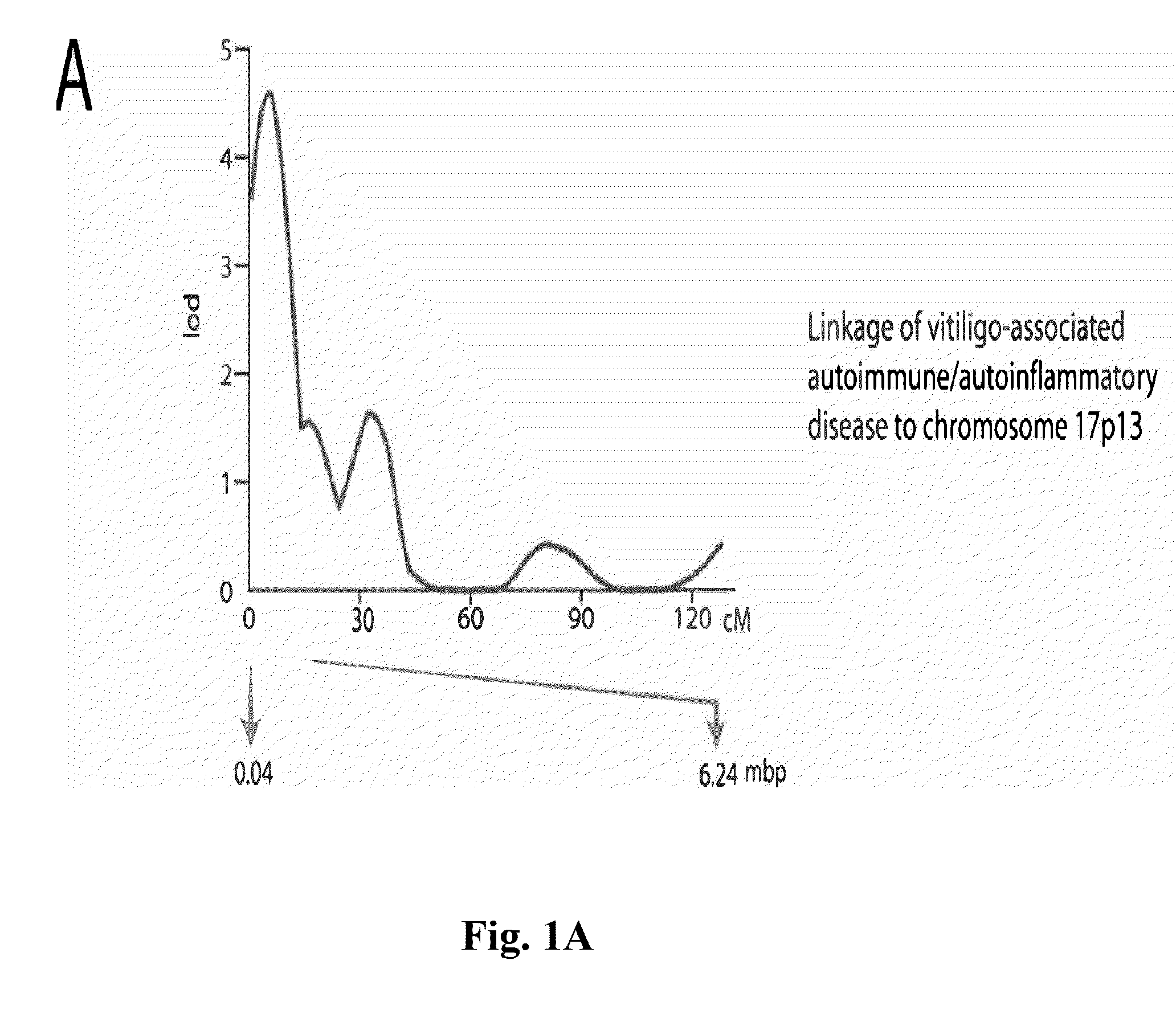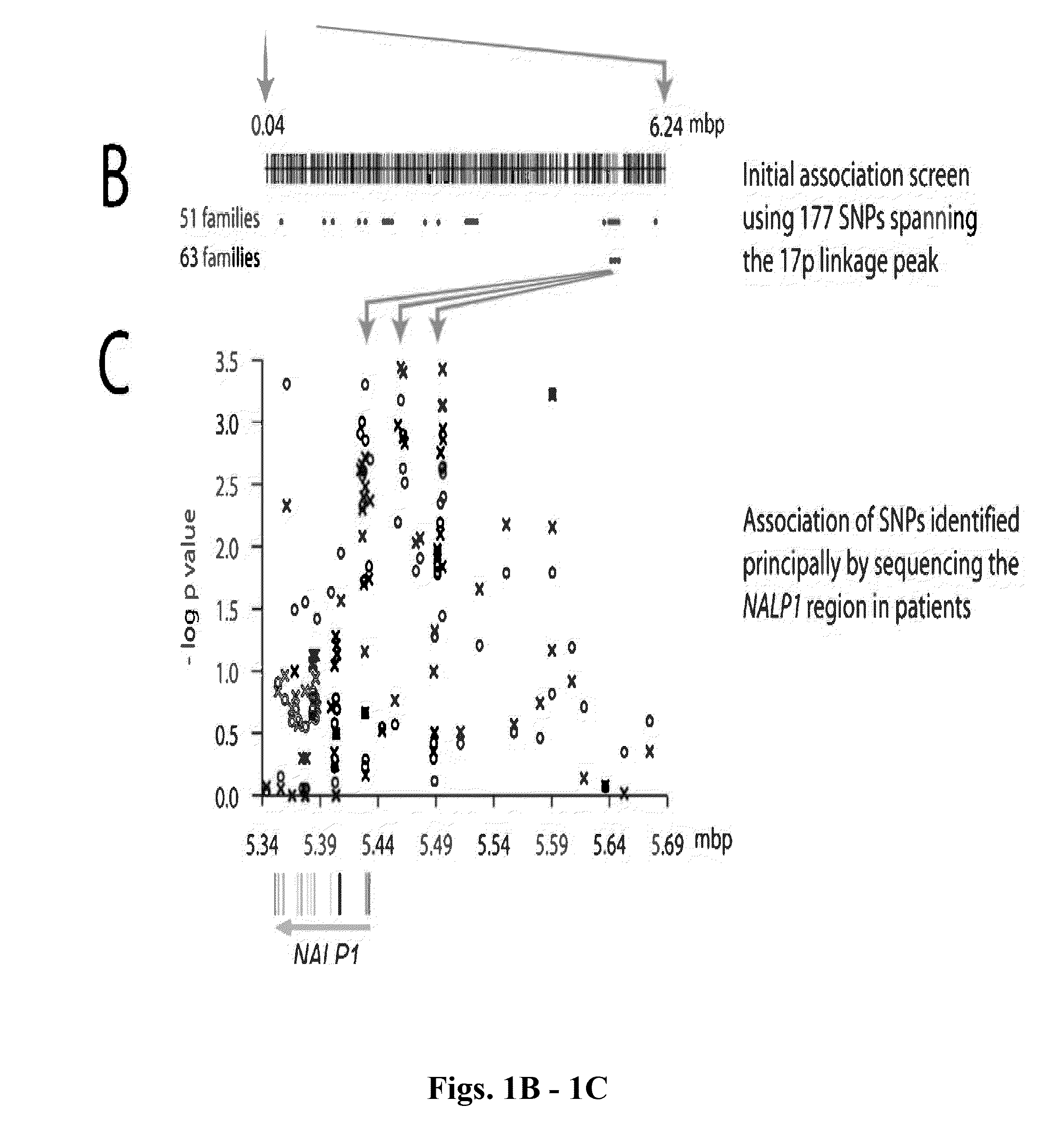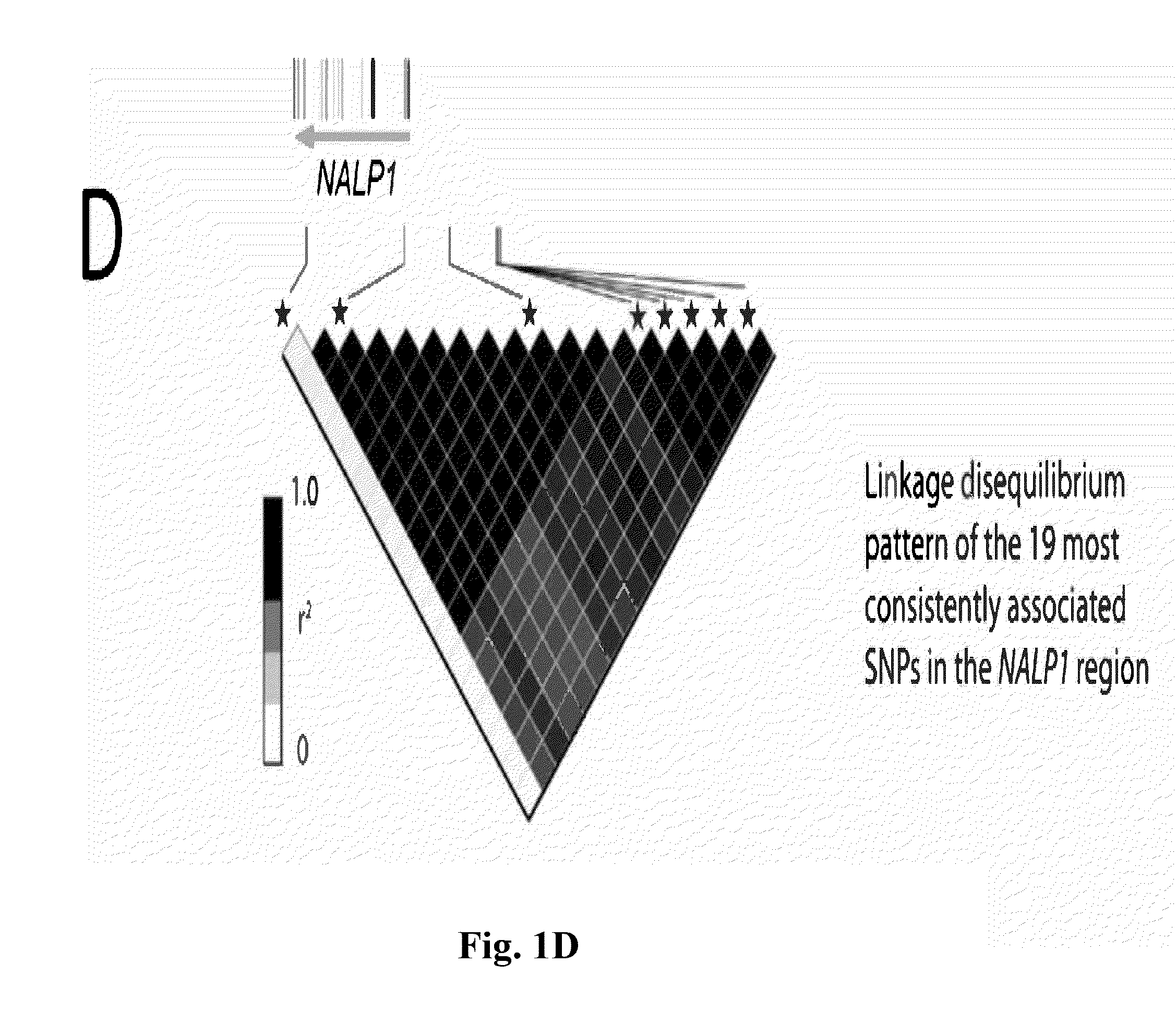Gene and pathway and their use in methods and compositions for predicting onset or progression of autoimmune and/or autoinflammatory diseases
a technology of autoinflammatory diseases and genes, applied in the direction of drug compositions, peptide/protein ingredients, immunological disorders, etc., can solve the problem that genes have not provided facile targets
- Summary
- Abstract
- Description
- Claims
- Application Information
AI Technical Summary
Benefits of technology
Problems solved by technology
Method used
Image
Examples
example 1
[0147]In one exemplary study, 177 single-nucleotide polymorphisms (SNPs) spanning the 17p13 linkage peak were tested for association with disease. A strong candidate gene was identified. DNA in and around the gene was sequenced to identify additional SNPs. Then, a second round of tests was performed for association using some of the 177 SNPs, thus elucidating the association with disease in the gene and its extended promoter region in fine detail. A candidate gene was identified as NALP, encoding NACHT leucine-rich-repeat protein 1, a regulator of the innate immune system.
[0148]In another exemplary method, fine-scale association mapping with the use of DNA from affected families and additional SNPs in and around NALP1 showed an association of specific variants with vitiligo, an extended autoimmune and autoinflammatory disease phenotype, or a combination of the diseases. Conditional logistic-regression analysis of NALP1 SNPs indicated that at least two variants contribute independent...
examples 2 and 3
[0167]In another exemplary study, association of high-risk NALP1 region SNPs with vitiligo was independently confirmed in a series of Romanian patients with generalized vitiligo (Tables 4 and 5). Four of the NALP1 region SNPs were selected that were highly associated with risk of vitiligo and other autoimmune diseases (rs6502867, rs12150220, rs2670660, rs8182352) in the multiple autoimmune disease families. These four SNPs were genotyped in 66 Romanian patients with generalized vitiligo (many with other vitiligo-associated autoimmune and autoinflammatory diseases) and in 93 population-matched controls who did not have vitiligo or any other autoimmune or autoinflammatory diseases. Allele frequencies for each SNP were then compared in cases versus controls, as were genotype frequencies and overall genotype distributions. As represented in exemplary Table 4, all four of these SNPs showed association with generalized vitiligo in the Romanian patients by one or more of these measures, an...
example 4
Genetic Variations in NALP1 Gene Associated with Autoimmune / Autoinflammatory Disease
[0169]High density SNP genotyping was used to perform a detailed genetic linkage analysis and to identify a gene, haplotypes and specific genetic variations in apparent association with vitiligo-associated multiple autoimmune / autoinflammatory disease. Single-nucleotide polymorphism (SNP) genotyping and pedigree-based association analysis in 114 multiplex families with vitiligo-associated multiple autoimmune / autoinflammatory disease were used to identify the NALP1 gene as putatively causal for the disease complex. DNA re-sequencing was performed to identify disease-associated sequence variants and haplotypes.
[0170]Fine-scaled linkage and association mapping in an extended multiple autoimmune disease family cohort confirmed linkage and association of both vitiligo alone and vitiligo-associated multiple autoimmune / autoinflammatory disease to a high-risk SNP haplotype spanning the proximal portion of the...
PUM
| Property | Measurement | Unit |
|---|---|---|
| temperature | aaaaa | aaaaa |
| ionic strength | aaaaa | aaaaa |
| temperatures | aaaaa | aaaaa |
Abstract
Description
Claims
Application Information
 Login to View More
Login to View More - R&D
- Intellectual Property
- Life Sciences
- Materials
- Tech Scout
- Unparalleled Data Quality
- Higher Quality Content
- 60% Fewer Hallucinations
Browse by: Latest US Patents, China's latest patents, Technical Efficacy Thesaurus, Application Domain, Technology Topic, Popular Technical Reports.
© 2025 PatSnap. All rights reserved.Legal|Privacy policy|Modern Slavery Act Transparency Statement|Sitemap|About US| Contact US: help@patsnap.com



